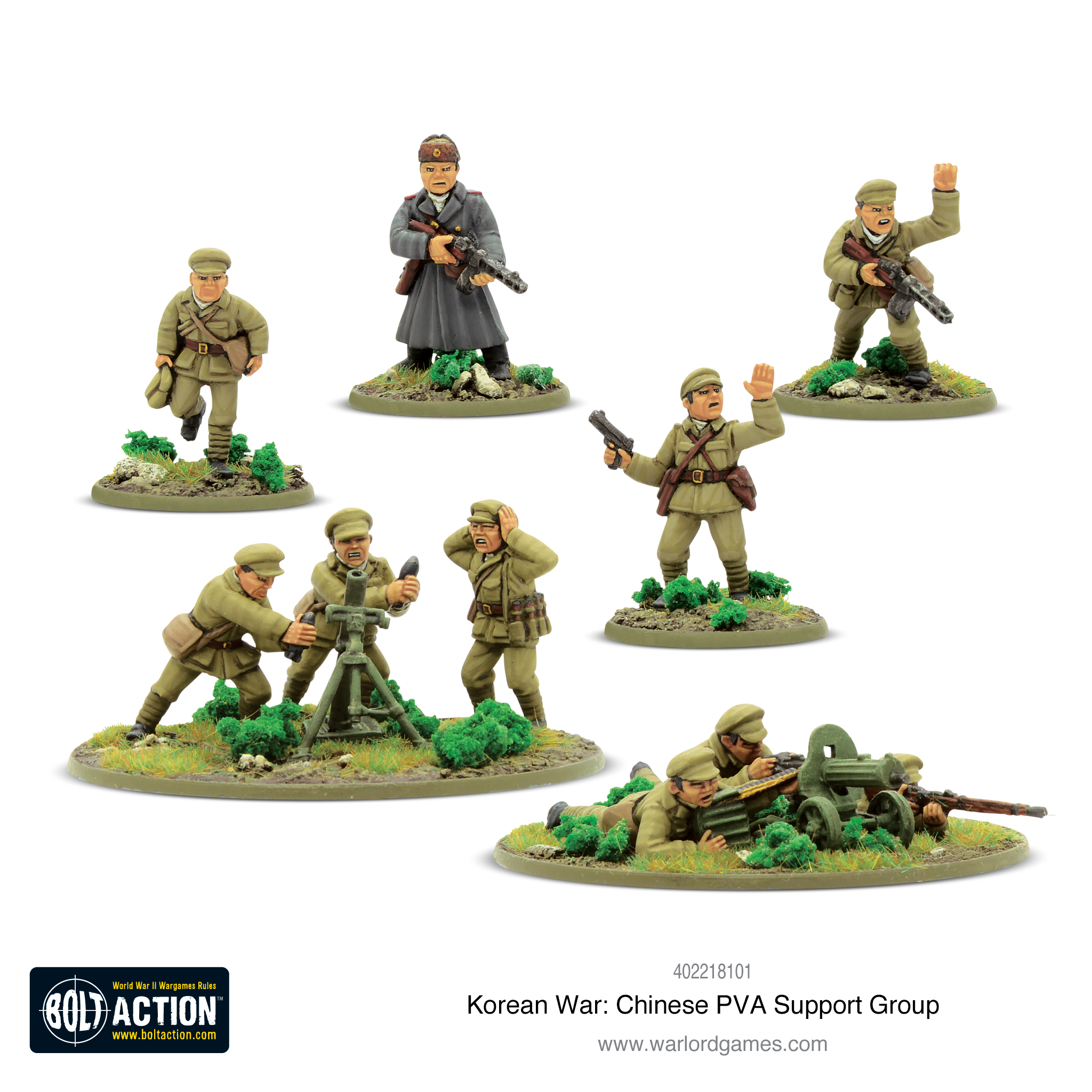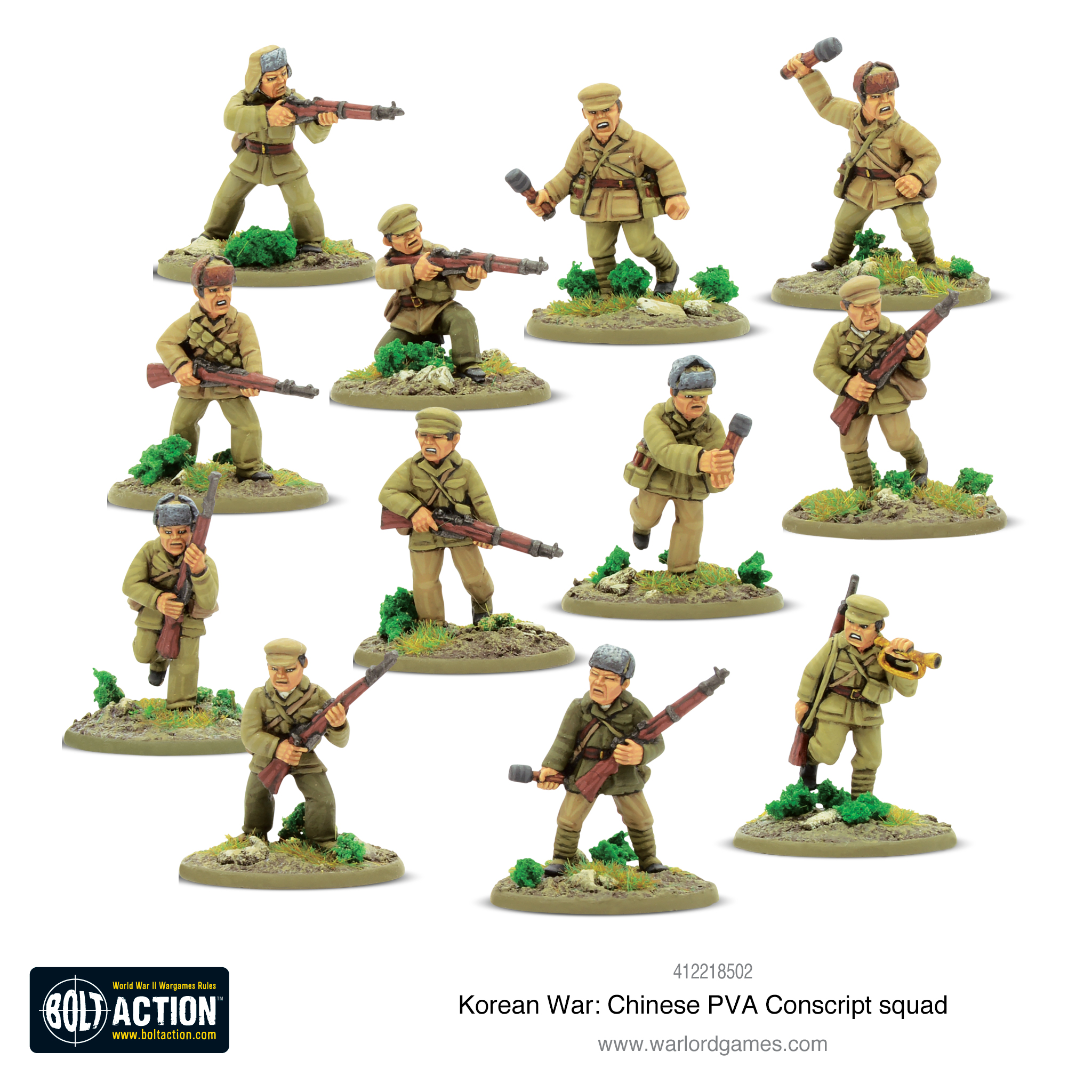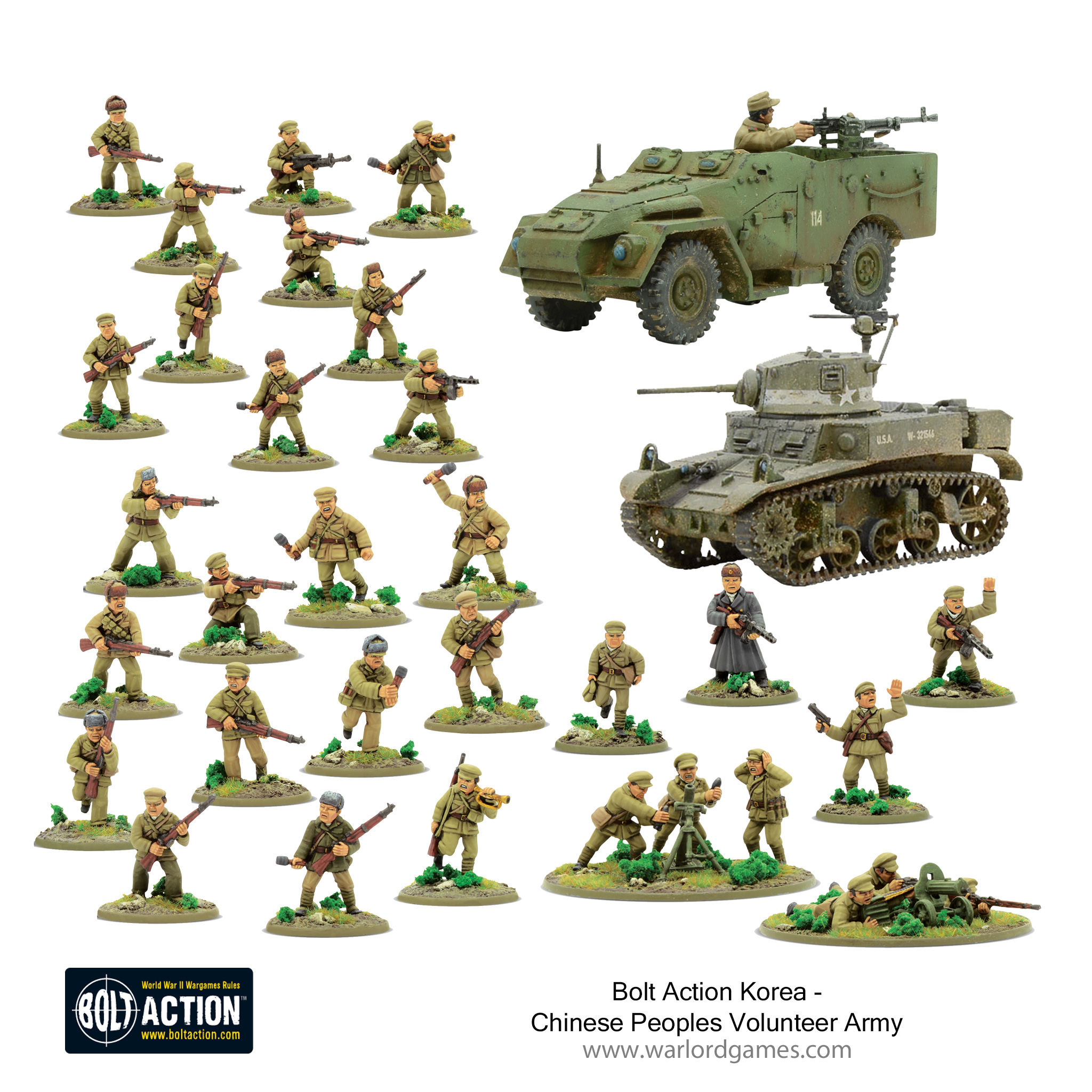
Korean War: Chinese Infantry
The Chinese People’s Volunteer Army entered the Korean War in October 1950, an unexpected opponent for the UN forces fighting against North Korea.
Enter the Dragon
Though the Chinese were consulted prior to North Korea’s attack on the south, they did not initially expect to participate in the conflict. The lightning-fast UN response in the defence of South Korea came as a shock. They were embittered after years of civil war, which had only been interrupted by the war with Japan. The internal hostilities had only concluded in 1949, and with Japan superseded by the US as the dominant ‘Imperial’ force in the Pacific, the Chinese considered them a grave threat.
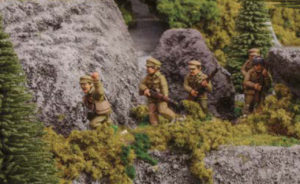 Thus, when UN forces began to approach the border at the Yalu River; tensions snapped. The maneuvres seemed to mimic a previous Japanese incursion into Manchuria, and fearing a repeat of this, the Chinese sent a diplomatic warning through the Indian ambassador to the US government; they should not cross the 38th Parallel or they would face Chinese assistance for North Korea. This warning was ignored. Thus in November 1950, the Chinese, numbering over 130,000, crossed the river to repel the ‘imperialists’.
Thus, when UN forces began to approach the border at the Yalu River; tensions snapped. The maneuvres seemed to mimic a previous Japanese incursion into Manchuria, and fearing a repeat of this, the Chinese sent a diplomatic warning through the Indian ambassador to the US government; they should not cross the 38th Parallel or they would face Chinese assistance for North Korea. This warning was ignored. Thus in November 1950, the Chinese, numbering over 130,000, crossed the river to repel the ‘imperialists’.
Calling their soldiers ‘volunteers’, as a way of avoiding all-out war with the US, the initial campaign featured tough, dedicated troops; battle-hardened by the Civil War and by war with Japan. They were under-equipped, lacked air support, had no tanks, but were masters of camouflage, infiltration, night attacks, and guerrilla warfare.
The People’s Volunteer Army was a lightly armed and highly mobile infantry force. To represent this in Bolt Action, regular and veteran PVA Infantry are allowed to make a free move after set-up.
Chinese PVA Support Group
Headquarters Team
Officers of the CCP army were selected on past military experience and political ideology. CCP army officers did not carry swords like Japanese officers. They had titles, not ranks; for example, Platoon Commander or Company Commander, rather than Lieutenant or Captain. There are also models to represent medics and/or forward observers.
Medium Machine Gun Teams
The Type 24 machine gun was a Chinese produced copy of the MG08/15 Maxim machine gun. The Chinese would make use of captured US .30cal MMG and make copies of the .30 cal.
Medium Mortar Team
The Chinese had a fair number of medium mortars in the infantry battalion, typically utilizing the Russian model 82mm and the 81mm Brandt Mle 27/31 medium mortar. The Chinese PVA formed small batteries of three tubes in an infantry battalion’s weapons company and six-tube batteries in a battalion mortar company.
Contains 10 Metal Models & 2 Weapons – Supplied unassembled and unpainted
Chinese PVA Infantry Squad
A Chinese infantry squad consists of 10 men led by a Corporal. Submachine guns were uncommon, but some units were issued with Soviet PPSh-41s. The Czechoslovakian designed and locally made Zb vz. 26 served as the squad’s light machine gun. The remaining riflemen carried the Hanyang 88 rifle.
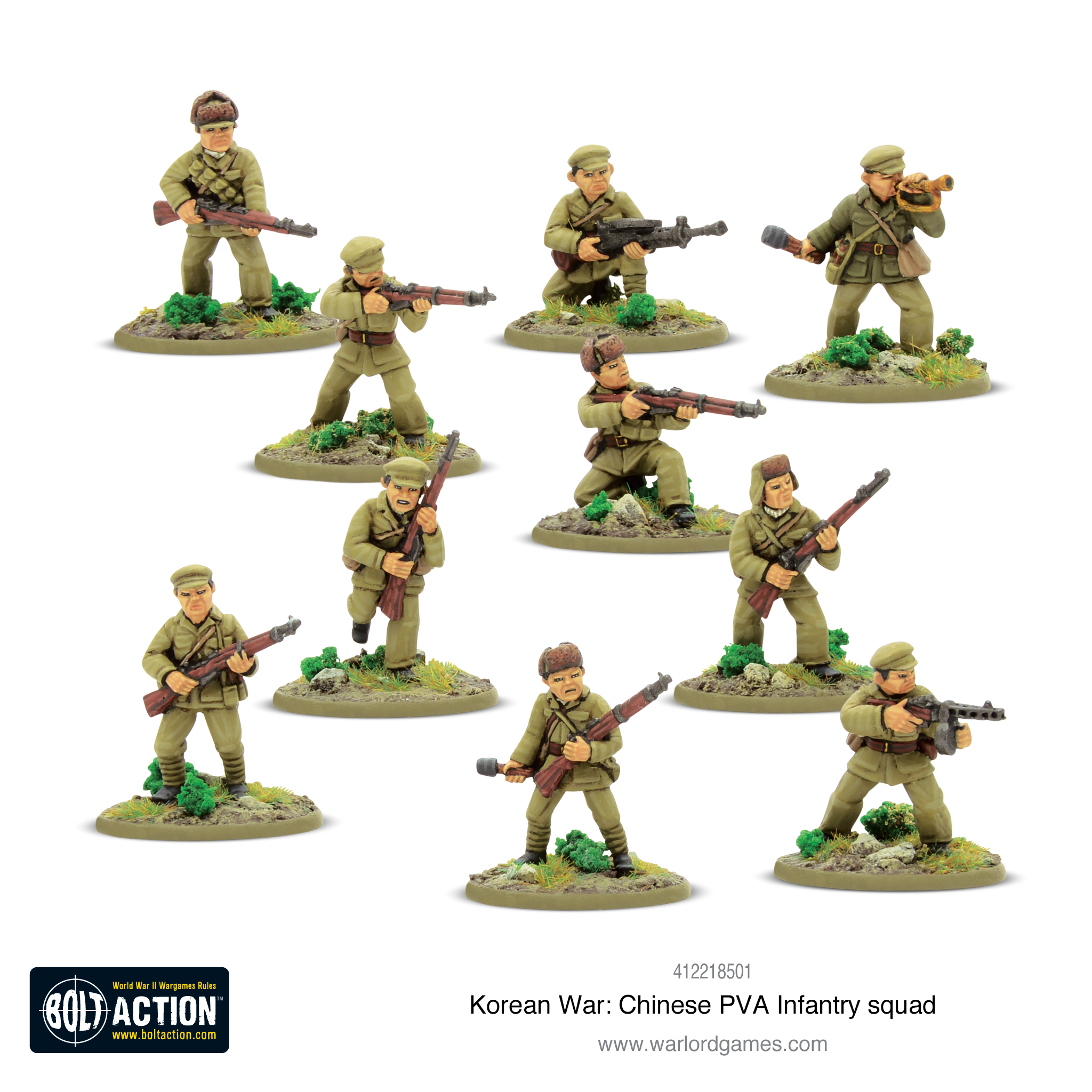 Contains 10 metal models, supplied unassembled and unpainted.
Contains 10 metal models, supplied unassembled and unpainted.
Chinese PVA Conscript Squad
A large portion of the Chinese PVA was made up of conscript peasant soldiers and soldiers captured during the Civil War. Some soldiers had actually surrendered during the Civil War and were forcibly conscripted. Loyalty and capability remained in question for these conscript squads. Some soldiers had very little military training and were armed with rifles and shoulder satchels full of grenades. These units proved to be unpredictable in battle, some fought with distinction, while others needed more encouragement from a political officer.
Any Chinese army may include a free twelve-man levy squad of Inexperienced infantry equipped with rifles only (no other weapon options may be taken).
Contains 12 metal models, supplied unassembled & unpainted.
Getting started with the Chinese People’s Volunteer Army
The Armies of China allows players to choose a unique force and it will offer a challenge to play for the owner and the opponent. You may choose some new and interesting options for your Communist army. Make no mistake, this is an infantry fighting force, relying on infiltration, scouting and attacking at the proper moment at the most opportune location on the board. Conversely, if you are needing to defend your position then make use of every resource you have available to halt the UN aggressors.
This set gives you the ideal starting point to oppose the UN ‘imperialists’.
Get started with the Korean War
Your starting point for re-enacting the ferocious battles of the Korean war is the Bolt Action: Korea book. It is absolutely crammed with history, army lists and scenarios.
Inside the book, you’ll find a comprehensive history of the conflict with details of every major battle fought between the two sides. It also includes details of the various forces and their organisation, commanders, and equipment. Scenarios are provided for many of the battles, along with comprehensive force selectors to help you assemble your force.
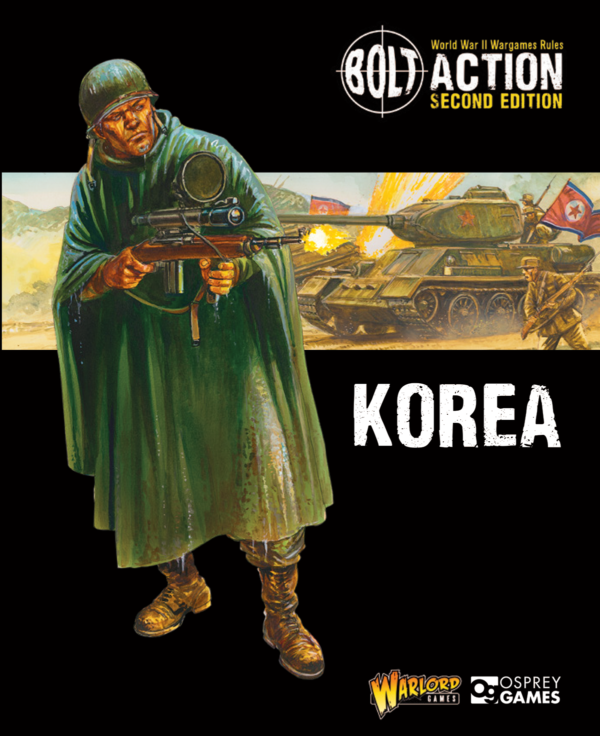
The post Korean War: Chinese Infantry appeared first on Warlord Games.

